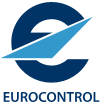Reducing aviation emissions by 55% by 2030: Can it be done - and if so, what are the extra costs of decarbonisation measures?
Eurocontrol Think Paper 16 published

Our latest Think Paper, the 16th in a series of thought-provoking studies, provides an in-depth assessment of what cutting emissions by 55% in 2030 compared to 1990 levels would mean for European aviation in practical terms. Our analysis is aligned with the planned policy proposals associated with the EU Green Deal as well as other initiatives from across Europe. The estimates are based on the three traffic scenarios – High, Base and Low – published in our recent EUROCONTROL Aviation Outlook 2050.
We demonstrate that a 55% reduction in CO2 emissions by 2030 is achievable in all three scenarios, but its success is heavily reliant on Market Based Measures, mainly via the EU Emissions Trading System (ETS), which will make an 83% contribution to the net reduction.
On the policy side, we assess the impact and the extra cost of Sustainable Aviation Fuel (SAF) uptake, the impact of ramping up kerosene taxes, and the phasing out of free emissions allowances. We estimate that the cumulative extra cost to the aviation industry over the period 2022-2030 of these decarbonisation measures will amount to €62 billion, comprising:
- €29 billion in extra tax costs on kerosene (applied to intra-EEA flights)
- €23 billion in extra ETS costs (applied to EU + UK + Switzerland)
- €10 billion in extra fuel mix costs (applied to all-ECAC States based on a 5% SAF / 95% kerosene mix).
The extra cost to the airline industry in 2030 alone is estimated at €14 billion.
However, we find that industry-driven measures are capable of playing a major part in achieving the required net emissions savings and offsetting the extra costs of decarbonisation. The positive impact of measures such as the implementation of the Single European Sky, other operational improvements and accelerated fleet renewal could drastically reduce the extra cost by €33 billion over the same period, lowering the cumulative cost to the industry to €29 billion.
For Eamonn Brennan, EUROCONTROL Director General, “this is a challenging time for the European aviation industry, but the pathway to decarbonisation is attainable: aviation can cut CO2 emissions by 55% by 2030 compared to 1990 levels. However, its success will rely very heavily on Market Based Measures. While implementing policy decarbonisation measures will create significant extra costs for airlines, improvements led by the aviation industry are capable of bringing the extra cumulative costs significantly down from €62 billion to €29 billion by 2030. There is a pressing need to ramp up swiftly SAF production and usage enabling SAFs to compete with conventional kerosene. And if the sector returns to profitability, our High traffic scenario will drive increased revenues which will play a fundamental role in accelerating investment in new technology and thus driving the sustainability transformation. We need to accelerate aviation decarbonisation by prioritising actions, fostering the transition by inter alia offering financial support and encouraging alliances, and balancing taxation with the need for aviation to recover.”
Download the think paper here: https://www.eurocontrol.int/sites/default/files/2022-05/eurocontrol-think-paper-16-reducing-aviation-emissions-55-by-2030.pdf


.png)
.jpg)





Comments
There are no comments yet for this item
Join the discussion